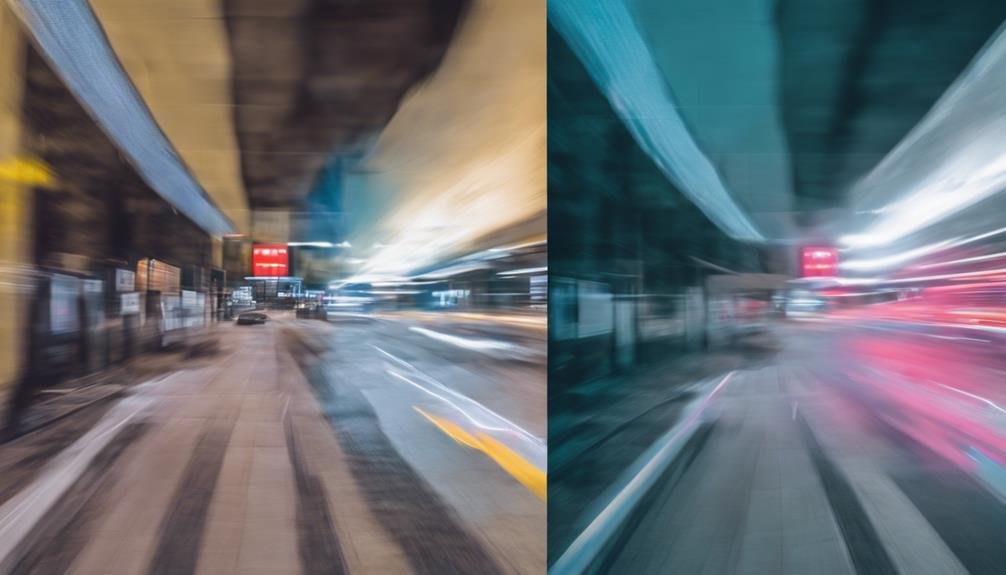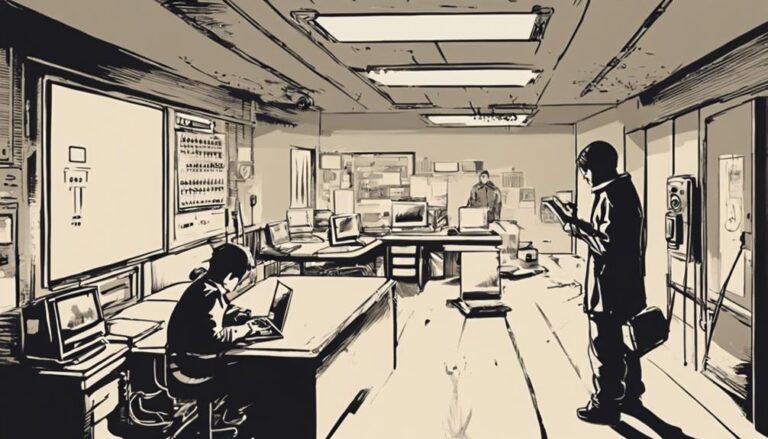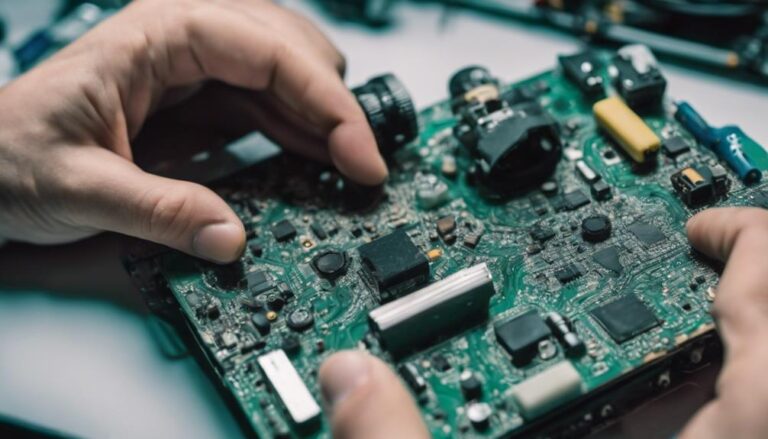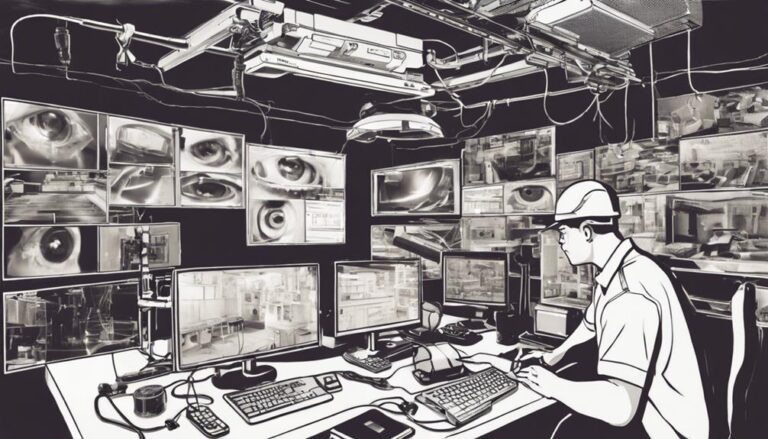When dealing with CCTV camera image problems, several common issues can disrupt clear surveillance. You might face blurry footage from incorrect focus or dirty lenses. Poor low-light performance can also hinder visibility, which is solvable by enhancing infrared lighting and adjusting camera settings. Color distortion may arise from inadequate calibration, while overexposed images can result from excessive light. Connectivity issues usually stem from interference or cable damage. Regular maintenance, including lens cleaning and firmware updates, is critical for preventing image quality degradation. Exploring these aspects further can illuminate additional strategies for ideal CCTV performance.
Blurry Footage Issues
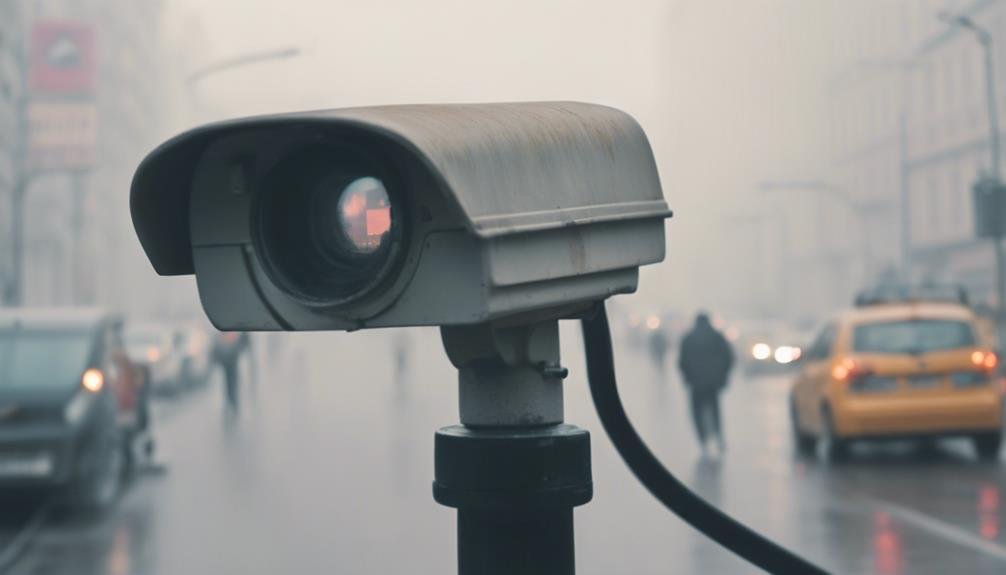
Blurry footage is one of the most common issues you might encounter with CCTV cameras, and it can greatly impact the effectiveness of surveillance systems. When your camera‘s images are unclear, vital details can be lost, hindering your ability to monitor and respond effectively. One primary cause of blurry footage is incorrect focus adjustment. If the camera‘s focus isn’t properly calibrated, the images may appear hazy, making it difficult to identify individuals or objects. Regularly checking and adjusting the focus can markedly enhance image clarity.
Another factor contributing to blurry footage is dirty lenses. Dust, fingerprints, or moisture on the lens can obscure the camera’s view, rendering the footage unusable. Performing routine lens cleaning is essential to maintaining peak performance. Using a microfiber cloth and a suitable cleaning solution, you can safely remove any obstructions without damaging the lens.
Poor Low-Light Performance
When you’re dealing with poor low-light performance in CCTV cameras, enhancing infrared lighting can greatly improve image quality. Additionally, adjusting camera settings, such as exposure and gain, can help optimize visibility in darker environments. It’s essential to assess these factors to guarantee effective surveillance under challenging lighting conditions.
Enhance Infrared Lighting
In low-light conditions, the performance of CCTV cameras often diminishes greatly, leading to unclear images that compromise surveillance effectiveness. To combat this issue, enhancing infrared illumination is essential. By strategically implementing infrared lighting, you can considerably improve the clarity of night-time footage.
First, consider the placement of your infrared lights. Ideal lighting placement is key; positioning them at angles that minimize shadows and maximize coverage will enhance the overall illumination. Confirm that the infrared lights are directed toward areas of interest, as this will allow the camera to capture clearer images.
Next, evaluate the type of infrared lighting used. Utilizing high-quality infrared LEDs can provide a broader spectrum of illumination and reduce the risk of washout, which can occur with lower-quality options.
Additionally, verify that your camera’s infrared filters are functioning properly; any obstruction or malfunction can severely impact image quality. Regular maintenance checks can prevent these issues. By enhancing infrared lighting and thoughtfully considering lighting placement, you’ll considerably boost your CCTV system’s performance in low-light scenarios, confirming reliable surveillance and peace of mind.
Adjust Camera Settings
After enhancing infrared lighting, the next step to improving low-light performance involves adjusting your camera settings. Start by optimizing the camera resolution; higher resolution settings can capture more detail in low-light conditions. However, be mindful that increasing resolution may require a higher bandwidth and storage capacity.
Next, consider your frame rate. In low-light situations, a lower frame rate can often yield clearer images. A frame rate of 15 to 20 frames per second (fps) is typically sufficient for capturing essential details while reducing motion blur. If your environment is particularly dark, you might even drop the frame rate further, allowing the camera to gather more light per frame.
Additionally, adjust the exposure settings. A longer exposure time will help gather more light, but it can lead to motion blur if there are moving objects in the frame. Experiment with different settings to find a balance that suits your specific environment.
Lastly, enable any low-light or night vision modes your camera may offer. These modes often employ advanced algorithms to enhance image quality under challenging conditions. By carefully adjusting these settings, you can greatly improve your CCTV camera’s low-light performance.
Color Distortion Problems
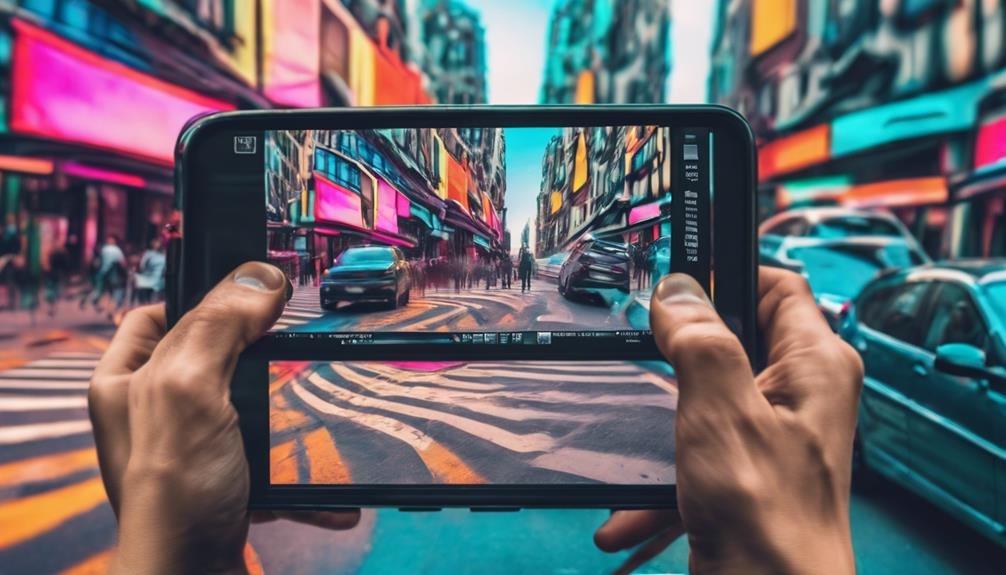
Experiencing color distortion in CCTV camera images can greatly impair the effectiveness of surveillance systems. This issue often arises due to inadequate color calibration or unfavorable lighting conditions. When colors appear unnatural or skewed, it can hinder your ability to accurately identify subjects or assess situations.
To resolve color distortion, start with proper color calibration. Verify your camera settings are adjusted according to the specific environment. Many CCTV systems offer automatic white balance settings, but manual adjustments can provide more precise results, especially in mixed lighting scenarios.
Additionally, consider the lighting conditions in which your camera operates. Different light sources, such as incandescent or fluorescent bulbs, can introduce unwanted color casts. Using filters or changing the positioning of lights can help mitigate these effects.
Regularly testing and adjusting your CCTV system for color accuracy is essential. This not only enhances image quality but also guarantees reliable surveillance. By focusing on these factors, you can greatly improve color fidelity and maintain the integrity of your security footage, allowing you the freedom to monitor your environment effectively.
Overexposed Images
Overexposed images occur when too much light hits the camera sensor, leading to washed-out visuals and loss of detail. You need to understand the primary causes of this issue, such as inappropriate camera settings or inadequate lighting conditions, to effectively address it. By implementing specific adjustment techniques, you can enhance image quality and restore critical details.
Causes of Overexposure
One major cause of overexposure in CCTV camera images is excessive lighting. When light levels exceed the camera’s ideal range, it can overwhelm the sensor, causing washed-out images. This typically happens in environments with bright sunlight or artificial lights directly hitting the lens. Additionally, high sensor sensitivity settings can exacerbate the issue, making the camera more reactive to ambient light.
The following table illustrates the potential causes of overexposure:
| Cause | Description | Impact on Image |
|---|---|---|
| Excessive Lighting | High levels of light entering the lens | Images appear washed out |
| High Sensor Sensitivity | Increased responsiveness to ambient light | Overreacts to light levels |
| Reflective Surfaces | Light bouncing off surfaces like windows | Creates glare and hotspots |
| Improper Camera Placement | Positioning in direct light path | Consistently overexposed images |
Understanding these causes can empower you to assess your CCTV setup critically. By identifying the source of overexposure, you can take steps to mitigate the impact, ensuring your surveillance captures clear, actionable images.
Solutions for Adjustment
Addressing the challenges posed by overexposed images requires a strategic approach to adjustments. To regain clarity and guarantee your CCTV footage is usable, follow these key solutions:
- Lens Calibration: Regularly calibrating your lens can greatly improve image quality. It helps in correcting focus issues that may cause overexposure.
- Angle Adjustment: Reassess the angle of your camera. Sometimes, simply tilting or repositioning the camera can mitigate direct light interference.
- Lighting Control: Implement proper lighting techniques. Use diffusers or shades to soften harsh lighting that contributes to overexposure.
- Exposure Settings: Adjust your camera’s exposure settings. Lowering the gain or adjusting the aperture can help balance the light levels.
- Use Filters: Consider using ND (Neutral Density) filters to limit the amount of light entering the lens, providing you with a more manageable image.
Connectivity and Signal Loss

Connectivity issues and signal loss are vital factors that can severely impact the performance of CCTV systems. If you’re experiencing these problems, it’s important to diagnose the root causes. Common culprits include wireless interference, cable damage, and network congestion.
To mitigate these issues, consider the following solutions:
| Problem | Cause | Solution |
|---|---|---|
| Wireless Interference | Frequency overlap | Change frequency |
| Cable Damage | Poor installation | Inspect and replace |
| Network Congestion | Multiple devices | Optimize router placement |
| Device Compatibility | Incompatible hardware | Verify compatibility |
| Environmental Factors | Physical obstacles | Relocate equipment |
Signal boosters can enhance connectivity, especially in challenging environments. Guaranteeing ideal router placement is important; it should be positioned centrally, away from obstructions. Additionally, monitor for frequency overlap with other devices which can disrupt signals. Finally, always check device compatibility to prevent unnecessary issues. By addressing these factors, you can greatly improve the reliability of your CCTV system, allowing for seamless surveillance and peace of mind.
Lens Obstruction Solutions
Clearing lens obstructions is essential for maintaining the clarity and effectiveness of your CCTV system. If you want to guarantee that your surveillance footage is reliable, you must address any blockages promptly. Here are some effective lens cleaning techniques and obstruction detection methods to take into account:
- Regularly inspect camera lenses for dust, dirt, or debris.
- Use microfiber cloths and appropriate lens cleaners to avoid scratches.
- Implement scheduled maintenance checks to catch obstructions early.
- Think about using protective covers to minimize environmental impacts.
- Utilize software solutions that alert you to potential obstructions in real time.
Image Freezing or Lagging
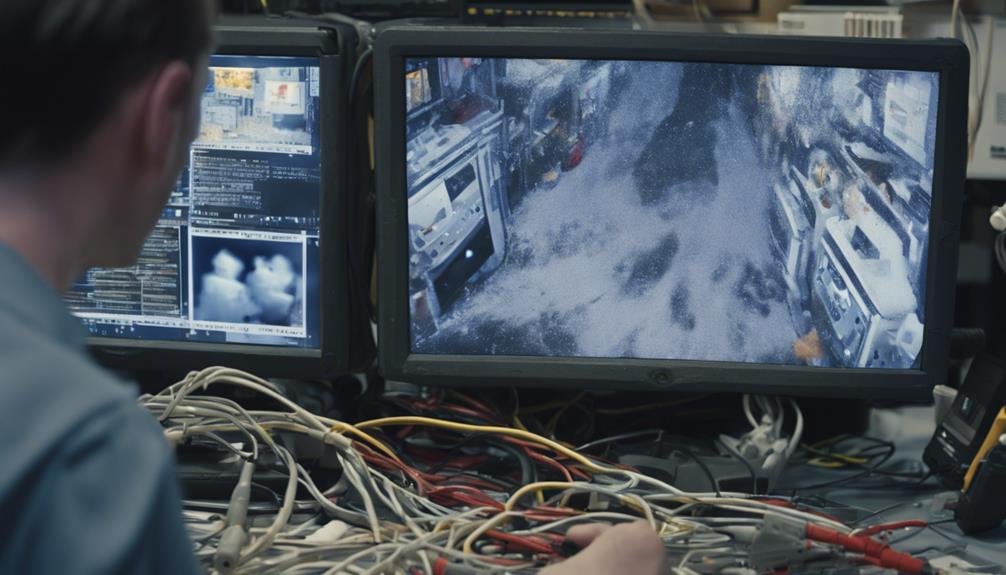
Even with a clean lens, CCTV systems can still experience issues like image freezing or lagging, which can undermine the reliability of your surveillance footage. These problems often arise due to high image resolution settings coupled with bandwidth limitations. When your camera transmits high-resolution images, it requires substantial bandwidth. If the network can’t handle this demand, you’ll notice delays or frozen frames.
Here’s a quick overview of common causes and solutions:
| Cause | Solution |
|---|---|
| High image resolution | Lower the resolution settings |
| Insufficient bandwidth | Upgrade network infrastructure |
| Network congestion | Schedule off-peak recordings |
Maintenance Tips for Clarity
To maintain ideal clarity in your CCTV camera images, regular maintenance is crucial. Over time, dust, grime, and environmental factors can compromise the performance of your cameras. Here are some maintenance tips to guarantee your system operates at peak clarity:
- Regular lens cleaning: Wipe lenses with appropriate materials to avoid scratches.
- Check camera positioning: Confirm each camera is aimed correctly to avoid obstructions.
- Inspect cables: Look for wear and tear that could affect image quality.
- Update firmware: Keep your camera’s software current for maximum performance.
- Test image quality frequently: Regular checks can help catch issues early.
These steps not only enhance image clarity but also safeguard your investment. Neglecting maintenance can lead to frustrating blind spots and unclear footage, limiting your freedom to monitor effectively. By committing to a routine that includes lens cleaning and careful camera positioning, you’ll maintain a clear and reliable surveillance system, empowering you to respond confidently to any situation. Remember, the clarity in your camera images is not just a technical necessity; it’s a crucial part of your security strategy.
Frequently Asked Questions
How Do Weather Conditions Affect CCTV Camera Image Quality?
Weather conditions greatly impact image quality. Rain can obscure visibility, while fog creates distortion. Temperature variations affect camera performance, and snow leads to interference. High humidity may also reduce clarity, complicating surveillance effectiveness in various environments.
Can Camera Placement Influence Image Clarity and Angles?
Camera placement’s like the compass guiding your vision; it shapes clarity and defines viewing angles. When you optimize camera positioning, you release the freedom to capture moments with precision, ensuring nothing important slips through unnoticed.
What Types of Lenses Improve CCTV Image Resolution?
When considering lens types for resolution enhancement, you should explore varifocal and telephoto lenses. They provide flexibility in adjusting focal lengths, markedly improving image detail and clarity, giving you greater control over your surveillance setup.
Are There Specific Brands Known for Better Image Quality?
When seeking brands known for superior image quality, consider those with advanced image sensors and low light capabilities. It’ll enhance your visual experience, providing clarity and detail that liberates your surveillance from mediocrity.
How Often Should I Upgrade My CCTV Camera System?
You should consider upgrading your CCTV camera system every three to five years due to technology advancements. Regular updates guarantee peak performance and security, keeping your surveillance capabilities aligned with current standards and innovations.
